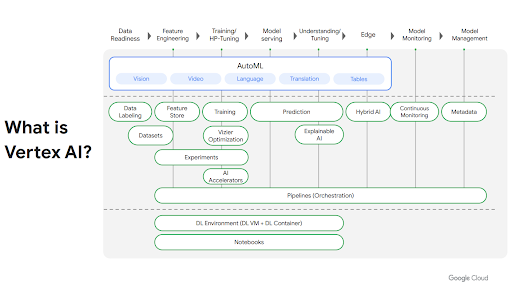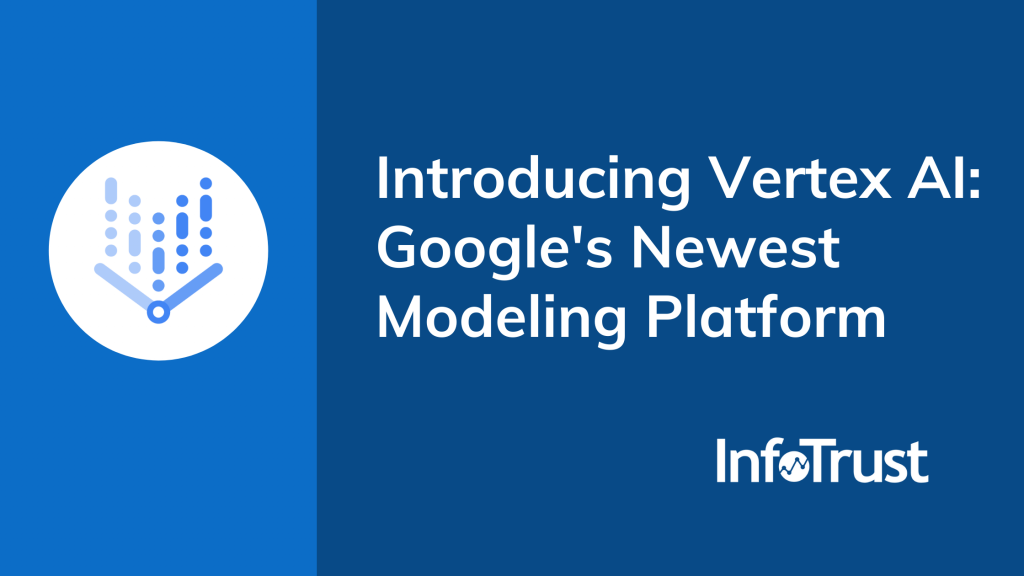If you’ve been watching this year’s virtual Google Applied ML Summit or Google Cloud Next ’21 event, you would have likely heard of the announcement of Vertex AI. Vertex AI Workbench is Google’s newest AI and ML platform and it aims to make the process of building and deploying ML models seamless and accessible to either a novice data scientist or an expert.
Vertex AI provides tools to support your end-to-end ML workflow—from gathering data, training models, deploying the models, and managing those ML models in production. The new platform aims to simplify ML workflow and unify Google’s AI and ML offerings.

Vertex AI has some cool features. For example, the platform also provides the option of using your own training data or the ability to write a custom model using custom model tooling options. Pre-trained APIs can be beneficial for video, vision, language, etc., so that it simplifies the process of training models without having prior knowledge of ML. The platform also supports a wide range of open-source frameworks such as PyTorch, Scikit-learn, and TensorFlow and can also integrate with ML frameworks which help in training and predicting the models. Another key feature of Vertex AI is its ability to access data across multiple Google Cloud Platform services such as BigQuery, Dataproc, Dataplex, and Looker which can help accelerate the process of training machine learning models faster.
So you may be thinking that all of this is great, but what does it mean for my business? At InfoTrust, we’ve seen with our existing clients that they’ve increased the usage of their business analytics and are leveraging data science to increase profitability. However, challenges with staffing, investment in technology, and execution has made it difficult to utilize data science to have an impact on business decision making.
As per the Vice President and General Manager of Cloud AI and Industry Solutions at Google Cloud, AI Workbench gets “data scientists and engineers out of the orchestration weeds, and creates an industry-wide shift that would make everyone get serious about moving AI out of pilot purgatory and into full-scale production.” This helps organizations simplify the process of deriving value from their data and help realize ROI faster.


